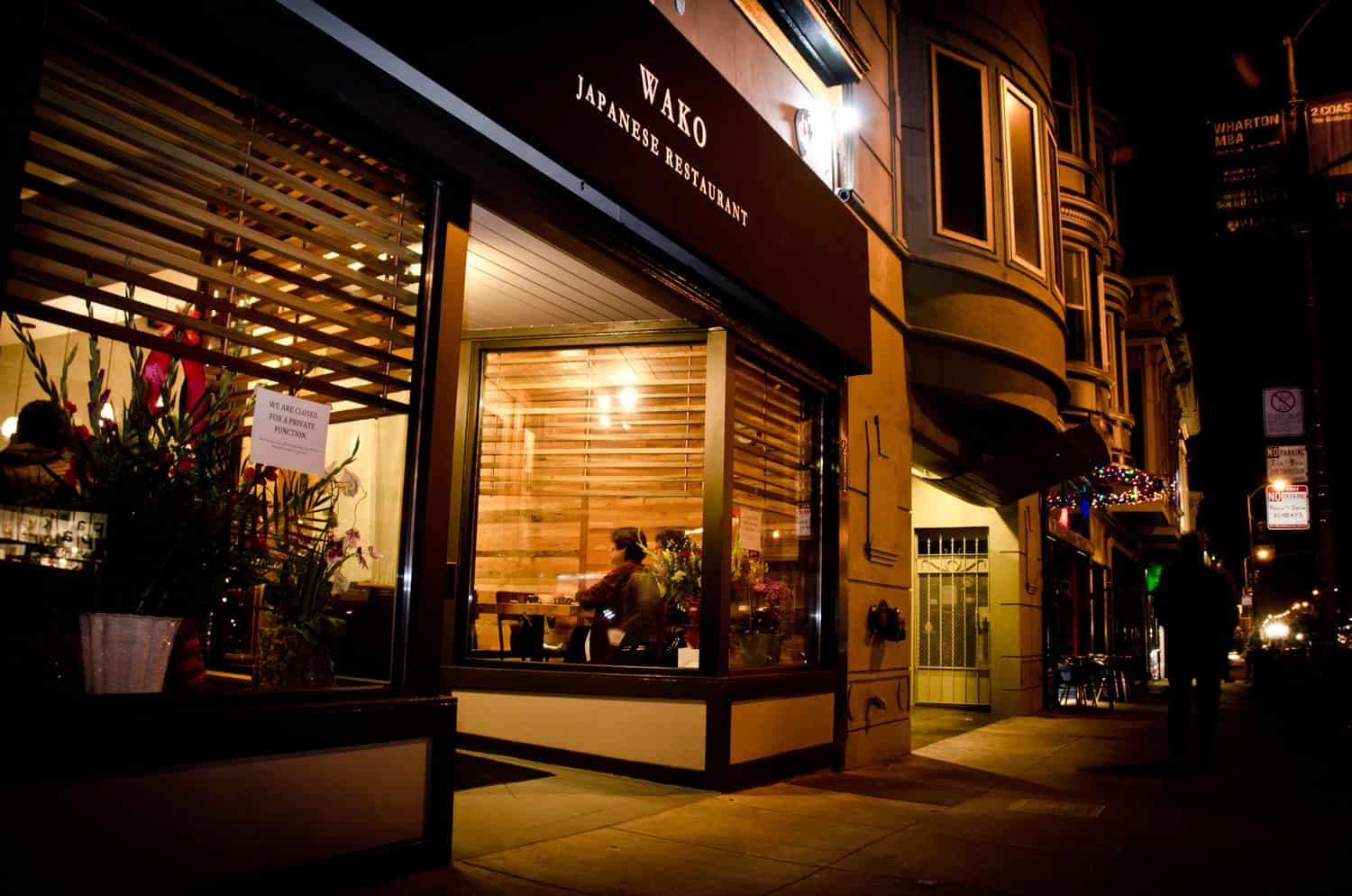
Wako
It opened in 2014 and in 2016 received its first of four consecutive 1 star ratings in the Michelin Guide.
211 Clement St San Francisco, CA 94118
(415) 682-4875
http://www.sushiwakosf.com
Richmond District is in the suburbs of San Francisco. Wako is a sushi restaurant along Clement Street, also known as the second Chinatown. It opened in 2014 and in 2016 received its first of four consecutive 1 star ratings in the Michelin Guide. It’s a small place with only 22 seats (8 counter seats) and it has a calm interior design that uses lots of wood. The customers are mostly locals and many people spend their special anniversaries here.
Nakamura, the owner and chef, comes from Ehime Prefecture. He majored in cooking during high school and received his chef’s license. After that he trained in sushi and Japanese cuisine at restaurants and hotels. Thereafter, with a burning desire to promote Japanese cuisine overseas and research further into its depth, backed by his admiration of the English world, he travelled to America. After spending 11 years at a Japanese restaurant in San Francisco, he opened Wako. One year later, the restaurant received one Michelin star. Since then, it continued to receive one Michelin star for four consecutive years. Nakamura says, “I believe it’s the result of each and every staff member's desire and consistent efforts to better themselves - even if just a little.”
A lot of the ingredients are produced in Japan. He’s even particular about the water he uses.
Japanese ingredients suit Japanese cooking. He uses high quality Japanese produce for everything from fish, rice, tea, and seaweed to the bonito and kelp for his stock. “Using ingredients from here doesn’t give the same flavor,” he says. He’s even particular about the water. In order to match Japanese water he uses an electrolyzer to make alkaline ionized soft water. Hard water is common in America and it doesn’t absorb flavors well. Even boiled it is hard and not suited to Japanese cooking. At first he used ordinary water, but wasn’t satisfied with the taste. He quickly started using the electrolyzer when he found it. The electrolyzer made it easier to produce a good stock, adds more flavor during boiling, and cook fluffier rice. An insatiable thirst for perfection indeed.
There are only two omakase, or "chef's choice" courses on the menu. They are served leisurely over a luxurious two and a half hours. Depending on available stock, the menu can change greatly every two months - one of the reasons they only offer chef's choice courses. Nakamura says, “If a la carte is available a lot of customers will only eat what they like and then leave.” Ingredients that you might not come across in a la carte can be introduced in a course meal. “Since they’re here I’d like to include something in the menu that they won’t find at other restaurants, like soft roe or noresore (conger eel whitebait),” says Nakamura. “I think it’s necessary to let people know that Japan has a variety of ingredients and there’s a lot of things I’d like people to try.”
Nakamura says the menu is pure Japanese, but his enquiring mind never stops trying to improve his skills. Every morning he goes to the local farmers market and buys seasonal vegetables himself to add to the menu. He also goes to restaurants other than Japanese that have Michelin stars to research compatible ingredients. Eggs and truffles are a standard combination, so he uses soft roe and black truffles on the savory egg custard in the current course menu. He’ll add what he can, even if it’s not a Japanese ingredient.
“I want people to come and enjoy richer flavors than they can get elsewhere,” says Chef Nakamura. Wako will doubtlessly continue to draw attention due to their constant desire to improve themselves.
